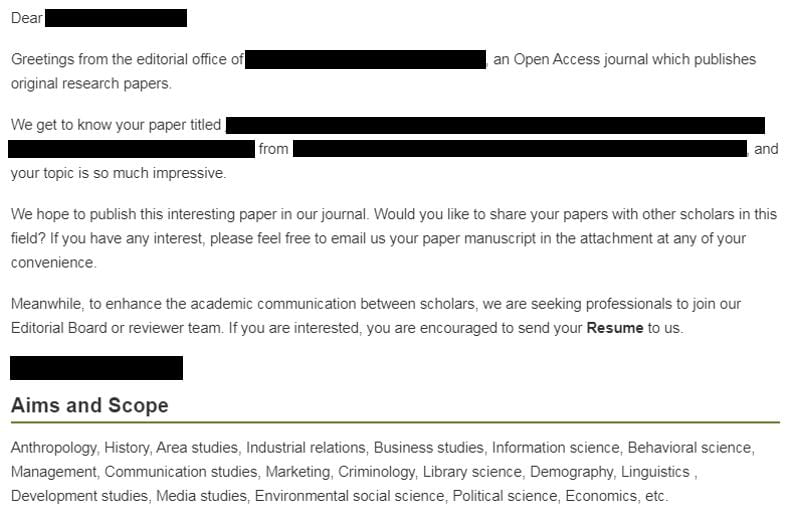What are they and what can you do to avoid getting caught?
An unfortunate part of the publishing landscape is the rise of the predatory journal. Unscrupulous “publishers” offer what appears to be comparatively cheap routes to gold open access but do not provide a suitable publishing platform to promote research or sustain openness.
They also don’t provide effective peer-review (if any), or even check your spelling!
So before you make a costly mistake and find yourselves with a bill (Research Services can’t pay predatory publishers), check out our guidance below.
What to watch out for.
- Typically, a predatory publisher will spam or solicit submissions.
- Their Article Processing Charge (APC) is lower than you would normally expect.
- The journal has too broad a disciplinary scope.
- The online evidence tells a different success story from the one they are selling e.g. they claim to be prestigious but have only published one issue!
What can you do to avoid getting caught in the predatory trap?
Do your research and don your investigative hat to take time to check out the journal’s claims first.
Keep ![]() in mind https://thinkchecksubmit.org/
in mind https://thinkchecksubmit.org/
- Do you know anyone who can vouch for the journals authenticity?
- Is the peer-review process clearly explained?
- What are the charges, and what are you paying for?
- Check the editorial board. Do you know them and can you find evidence of their own research?
- Is the publisher a member of COPE (Committee on Publication Ethics)? https://publicationethics.org/
- Are they listed on DOAJ? https://doaj.org/
- Are they asking you, without knowing you, to join their editorial board?
Our team has found that even checking out the address given on the journal website can help. If it appears to be a unit in an industrial estate, next to a car show room, then it’s probably not an academic publisher.
And yes, we have seen this happen!
Example email from a predatory publisher: flattery and phishing.

